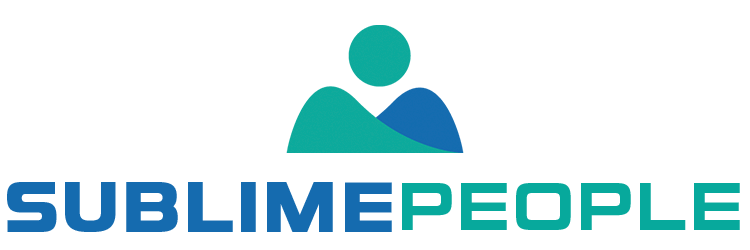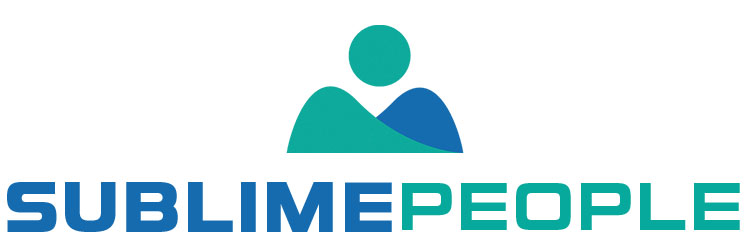Job Analysis is an important element of Human Resource Management (HRM) that helps to effectively manage job roles and job requirements in an organization. It is a systematic process of collecting, analyzing, evaluating, and documenting job-related information related to a particular job position.
Let us take an in-depth look into the concept of job analysis, exploring what it is and how doing a thorough job analysis today can provide your business with valuable insights. We’ll cover the meaning of job analysis, its uses, common methods used to carry out a successful implementation process of this type of research, and other important aspects that could help ensure success when conducting a well-structured job analysis.
In this Article:
What is job analysis process?
The job analysis process involves gathering job-related information from job descriptions, performance appraisals, job rotations, and job enrichment programs. It also includes observation methods, interviews with employees or job incumbents, and research of industry standards and job requirements. This data is then analyzed to determine the physical and mental activities needed to successfully perform the job. Job analysts also analyze potential risks associated with job roles, job requirements, job duties, and responsibilities.
Job Analysis involves examining job descriptions and job specifications. It also involves conducting job analysis interviews with job incumbents and job analysts, researching industry standards for the job position, collecting job analysis data from current and future job performance
What is the importance of job analysis?
Job analysis is an important element of human resource management, as it helps to identify the skills, abilities, and qualifications necessary for a particular job. Job analysis plays a major role for employers to better understand the roles and responsibilities associated with each job to ensure that the most suitable candidates are selected for various positions. The importance of job analysis lies in its ability to provide essential data used for developing personnel policies, budgeting, workforce planning, and training needs assessment.
By conducting a comprehensive job analysis, organizations can gain insight into tasks and duties associated with specific jobs while setting clear expectations of performance standards. This can help employers create appropriate job descriptions that accurately reflect what tasks employees will be responsible for daily. With this information in hand, employers can then focus their recruitment efforts on sourcing talent with the right skillset, experience level, and desired qualifications needed to successfully fulfill these roles.
Job analysis can also help organizations maximize their resources by allowing them to make informed decisions regarding staffing levels and career development opportunities. By understanding all aspects of a position from required skillsets and qualifications to job strain levels and organizational commitment expectations, employers can more effectively match individuals with suitable jobs that align with their personal goals or interests. Furthermore, it helps ensure that employees receive fair compensation for their work based on the value they bring to the organization through their skillset or experience level.
What are the uses of job analysis?
Job analysis is a systematic process of collecting and analyzing information about the duties, responsibilities, and requirements of a job. job analysis important can be used in performance appraisal, recruitment, selection, job rotation, job enrichment, and job enlargement. The six uses of job analysis include:
1. Performance appraisal
Job analysis helps evaluate employee performance in terms of skills, abilities, and competencies which are necessary to perform the duties assigned to them. This information can be used to identify areas where employees need additional training or skill development. It can also help managers determine whether an employee meets the minimum qualifications for the job they are doing.
2. Recruitment
Job analysis provides detailed information about the specific qualities required for each job such as experience, education level, technical skills, etc. This helps recruiters search for more qualified candidates from various sources like colleges and universities or other organizations. A well-defined position description will also help recruiters assess applicants against predetermined criteria to ensure they are selecting the most suitable candidate for the role.
3. Selection
Job analysis helps organizations make informed decisions when selecting candidates by providing a clear understanding of what characteristics and competencies are essential for successful performance in a particular role. This allows managers to assess each applicant’s fit for that role based on their characteristics rather than relying on generalizations or preconceived notions about different types of candidates.
4. Job rotation
Through comprehensive knowledge gained from a thorough job analysis process, organizations can develop training programs and rotational opportunities that allow employees to gain knowledge across multiple departments or roles within the company—increasing their versatility as team members and allowing them to grow professionally as well as contribute more effectively across multiple areas of expertise within the organization.
5. Job enrichment
Job analysis helps management decide how best to provide job enrichment opportunities within the job role. Job enrichment can take many forms from introducing additional responsibilities with new challenges and rewards or allowing employees to have more autonomy and decision-making abilities within their job duties.
6. Job enlargement
Organizations often use job analyses when looking to increase workloads on existing staff members without necessarily increasing their salary or benefits packages due to budgetary constraints—this practice is known as “job enlargement” and involves adding new tasks and activities onto existing roles to expand upon an employee’s scope of work without creating any new positions within the company structure itself (e.g., cross-training)
7. Labour relations
Job analysis comes into the picture also when duties and taxes are to be added or deleted for any particular job position. Job analysis helps in understanding the job position and determining its relative value compared to other jobs within the same organization. It also helps unions reduce risk factors associated with job rotation, job enrichment, and job enlargement by understanding the human characteristics required for the successful performance of each job.
8. Industrial and organizational psychology
Job analysis plays a critical role in the field of industrial and organizational psychology. It helps organizations understand how job requirements may impact job performance, job satisfaction, job motivation, and other important factors that can influence an individual’s success within their organization. Through job analysis, psychologists can identify areas where employees need additional training or support to ensure they are performing to their fullest potential. In addition, job analysis is also helpful for creating job descriptions and job evaluations that accurately reflect the value of a job to create an equitable employee remuneration system.
9. Human resources
Job analysis is one of the core functions of HR departments in any organization; it helps them ensure they have job descriptions and job specifications in place that accurately reflect the job’s duties and responsibilities, as well as job performance standards. HR professionals use job analysis to introduce job analysis into existing job descriptions or create job analysis plans that can help them determine whether they need to hire additional personnel, modify current job roles, or create new positions within the organization.
How do you perform a job analysis?
The job analysis process begins with gathering job-related information. This includes researching industry standards and determining the duties and responsibilities associated with a particular job position.
Interviews
Conducting interviews with current staff, supervisors, and executives can provide a comprehensive overview of the job duties; along with that, it is also possible to gain insight into which tasks are most essential, as well as any processes or technologies required. It is important to remember that when doing an interview-based job analysis it is best to ask open-ended questions to get rich and detailed information on the job in question.
Job descriptions
Reviewing previous or current job description can provide insight into the organizational structure, duties, and responsibilities associated with a particular job. Using this information as a baseline for further investigation helps to ensure accuracy and thoroughness in the analysis process.
Observation
Watching employees in their work environment provides direct evidence of what activities are being performed each day as well as how individuals interact with each other and their surroundings during those activities. This helps to identify not only skills associated with the position but also any potential safety concerns that need addressing.
Performance measurement
Setting up objective performance standards for a particular role can help to ensure accurate interpretation of data gathered through observation or interviewing staff because it will serve as a benchmark against which all observations can be measured. This helps determine whether or not existing processes are necessary or if there may be better ways of performing certain tasks within the organization.
Online surveys
Using online surveys provides employers with an easy way to collect information quickly from multiple sources (employees, supervisors, etc.). The data obtained from these surveys can then be used to assess trends in performance among similar positions at different sites or within different divisions/departments of an organization.
Task analysis
Breaking down tasks into smaller components gives employers a better understanding of individual actions required for the successful completion of each task associated with a specific job role; this type of analysis allows for determining what skills/knowledge/tools may be necessary for successful performance at that position over time and across different organizational environments.
Task analysis also aids in identifying any redundancies or gaps that exist between current roles and desired outcomes; thus providing insight into potential areas where improvement may need should change occur in the future due to new technology or processes being introduced into the workflow.
What are the 5 elements of job analysis?
Knowing the 5 elements can help you ensure that you are getting the right people for the right positions and measuring them correctly. In this blog post, we will discuss what these 5 essential components of job analysis are and how they impact your business. Read on to learn more.
1. Job description
The job description is the first element and human resources use it to describe the general summary of a particular position and is necessary for legal compliance. It also outlines the existing job description, tasks associated with the specific position as well as any special duties required. This information is important for potential candidates to be aware of so they can decide if it’s a good fit for them and also helps employers determine which applicants are best suited for the job they’re trying to fill.
2. Job specification
This is the second element and sets out criteria such as educational qualifications, experience levels, technical skillsets, specialized knowledge, or training that an applicant must meet to obtain a certain role. This helps employers narrow down their options by looking at concrete qualifications when choosing between multiple potential candidates for any position.
3. Job evaluation
The third element is KSAOs (Knowledge Skills Abilities & Other Characteristics). These are important details when doing job evaluations. This involves the systematic process of determining the relative value of a job in an organization. It is used to set employee remuneration systems, job rotation, job enrichment, and job enlargement. KSAOs may include any combination of knowledge (education level), skills (technical expertise), abilities (cognitive capabilities), or other characteristics deemed necessary for performing specific tasks successfully.
4. Conduct a job analysis
Job analysis information looks at both internal (demographics in-house) as well as external (trends in similar sectors) labor markets to identify gaps between available talent and desired skillsets. Labour relations job analysis helps employers to adapt their strategies accordingly to attract qualified candidates who best fit the needs of their business’s current goals and future growth plans. Human resources should Introduce job analysis to develop job descriptions and job specifications, labor relations job analysis, job evaluation, job enrichment, and performance appraisal.
5. Assigning qualifications
With information from previous steps in hand, this step focuses on assigning certain qualifications such as education level or work experience that are necessary for successful performance in a given role. It also includes outlining any certifications or special training needed as well as any potential rewards associated with achieving goals within that role.
6. Job performance
The fourth component is job performance which examines how an employee’s physical and mental activities are carried out over time to determine whether they are completing the job successfully. Job analyst looks at both qualitative and quantitative data to assess employee performance against specific goals or objectives set out for a given job position.
Conclusion
In human resource management, job analysis is the recruitment process of determining which activities and responsibilities are essential to the role for which you are hiring. Once analyzed, this information can be used in employee evaluations, performance reviews, creating training programs, and succession planning. Job analysis also provides a foundation upon which organizations can build their employment policies and procedures. By taking the time to thoroughly analyze job descriptions and job requirements, organizations can increase job satisfaction and productivity.




